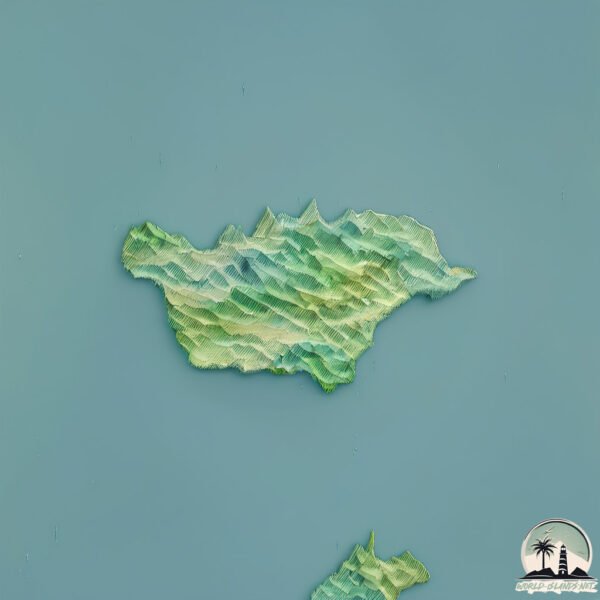Pengyong To

Welcome to Pengyong To, a Continental island in the Yellow Sea, part of the majestic Pacific Ocean. This guide offers a comprehensive overview of what makes Pengyong To unique – from its geography and climate to its population, infrastructure, and beyond. Dive into the details:
- Geography and Size: Explore the island’s size and location.
- Climate and Weather: Weather patterns and temperature.
- Topography and Nature: Uncover the natural wonders of the island.
- Infrastructure and Travelling: Insights on reaching, staying, and making the most of your visit.
- News and Headlines: Latest News.
Geography and size of Pengyong To
Size: 53.8 km²
Coastline: 47.4 km
Ocean: Pacific Ocean
Sea: Yellow Sea
Continent: Asia
Pengyong To is a Medium Island spanning 54 km² with a coastline of 47 km.
Archipel: –
Tectonic Plate: Okhotsk – Located in the northwest Pacific Ocean, the Okhotsk Plate encompasses the Sea of Okhotsk, the Kamchatka Peninsula, and parts of Japan. It’s involved in complex interactions with the Pacific and North American plates, contributing to seismic activity in the region.
The geographic heart of the island is pinpointed at these coordinates:
Latitude: 37.95365306 / Longitude: 124.67530998
Climate and weather of Pengyong To
Climate Zone: Continental
Climate Details: Monsoon-Influenced Hot-Summer Humid Continental Climate
Temperature: Hot Summer
Climate Characteristics: Hot summers with monsoon rains, contrasting with dry, cold winters. Typical of east Asian continental edges.
Topography and nature of Pengyong To
Timezone: UTC+09:00
Timezone places: Asia/Tokyo
Max. Elevation: 93 m
Mean Elevation: 32 m
Vegetation: Open Woodland
Tree Coverage: 46%
The mean elevation is 32 m. The highest elevation on the island reaches approximately 93 meters above sea level. The island is characterized by Plains: Flat, low-lying lands characterized by a maximum elevation of up to 200 meters. On islands, plains are typically coastal lowlands or central flat areas.
Dominating Vegetation: Open Woodland
Characterized by sparsely distributed trees with open canopy allowing sunlight to penetrate, supporting grasses and shrubs underneath. Often found in drier or transitional environments. Pengyong To has a tree cover of 46 %.
Vegetation: 13 vegetation zones – Exceptionally Diverse Island
Islands with more than ten vegetation zones are among the most ecologically rich and varied in the world. These islands are akin to miniature continents, boasting an incredible array of ecosystems. The sheer range of habitats, from high peaks to deep valleys, rainforests to deserts, creates a mosaic of life that is unparalleled. They are crucial for conservation and ecological studies.
Infrastructure and Travelling to Pengyong To
Does the island have a public airport? no.
There is no public and scheduled airport on Pengyong To. The nearest airport is Pyongyang Sunan International Airport, located 173 km away.
Does the island have a major port? no.
There are no major ports on Pengyong To. The closest major port is HAEJU HANG, approximately 106 km away.
The mean population of Pengyong To is 75 per km². Pengyong To is Gently Populated. The island belongs to South Korea.
Continuing your journey, Techong Do is the next notable island, situated merely km away.
South Korea is classified as Emerging region: MIKT: Mexico, Indonesia, South Korea, and Turkey – Economies recognized for their development potential and emerging market status. The level of income is High income: OECD.
News – Latest Updates and Headlines from Pengyong To
Stay informed with the most recent news and important headlines from Pengyong To. Here’s a roundup of the latest developments.
Please note: The data used here has been primarily extracted from satellite readings. Deviations from exact values may occur, particularly regarding the height of elevations and population density. Land area and coastline measurements refer to average values at mean high tide.
